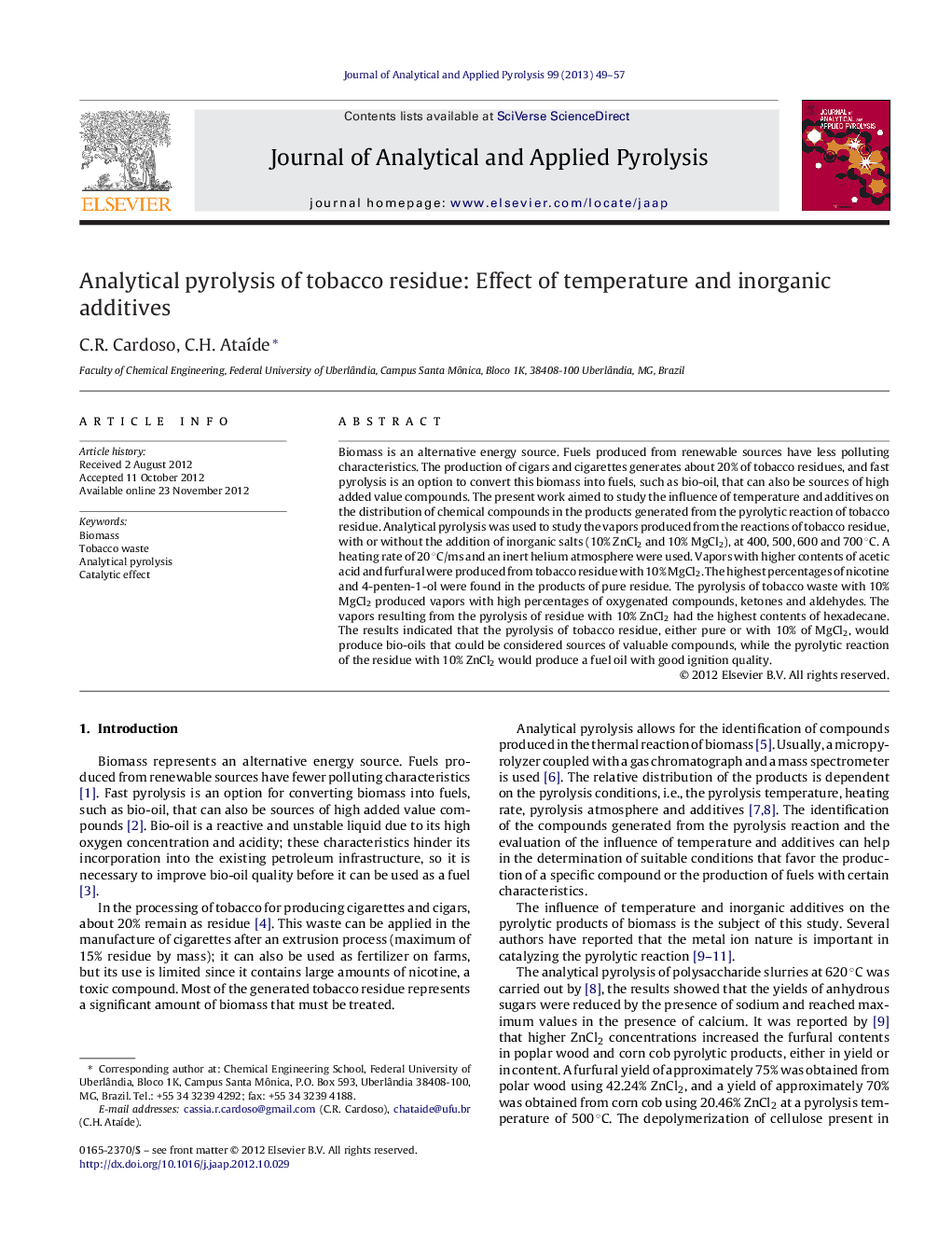| Article ID | Journal | Published Year | Pages | File Type |
|---|---|---|---|---|
| 1198401 | Journal of Analytical and Applied Pyrolysis | 2013 | 9 Pages |
Biomass is an alternative energy source. Fuels produced from renewable sources have less polluting characteristics. The production of cigars and cigarettes generates about 20% of tobacco residues, and fast pyrolysis is an option to convert this biomass into fuels, such as bio-oil, that can also be sources of high added value compounds. The present work aimed to study the influence of temperature and additives on the distribution of chemical compounds in the products generated from the pyrolytic reaction of tobacco residue. Analytical pyrolysis was used to study the vapors produced from the reactions of tobacco residue, with or without the addition of inorganic salts (10% ZnCl2 and 10% MgCl2), at 400, 500, 600 and 700 °C. A heating rate of 20 °C/ms and an inert helium atmosphere were used. Vapors with higher contents of acetic acid and furfural were produced from tobacco residue with 10% MgCl2. The highest percentages of nicotine and 4-penten-1-ol were found in the products of pure residue. The pyrolysis of tobacco waste with 10% MgCl2 produced vapors with high percentages of oxygenated compounds, ketones and aldehydes. The vapors resulting from the pyrolysis of residue with 10% ZnCl2 had the highest contents of hexadecane. The results indicated that the pyrolysis of tobacco residue, either pure or with 10% of MgCl2, would produce bio-oils that could be considered sources of valuable compounds, while the pyrolytic reaction of the residue with 10% ZnCl2 would produce a fuel oil with good ignition quality.
► The influence of temperature and additives on the products of the pyrolytic reaction of tobacco residue was studied. ► Vapors with higher contents of acetic acid and furfural were produced from tobacco residue with 10% MgCl2. ► The nicotine contents were reduced with the use of additives and the contents of hexadecane were increased with 10% ZnCl2. ► Pyrolysis of tobacco residue, pure or with 10% MgCl2, might produce bio-oils that could be sources of compounds. ► The pyrolysis of the residue with 10% ZnCl2 would produce a fuel oil with good ignition quality.
